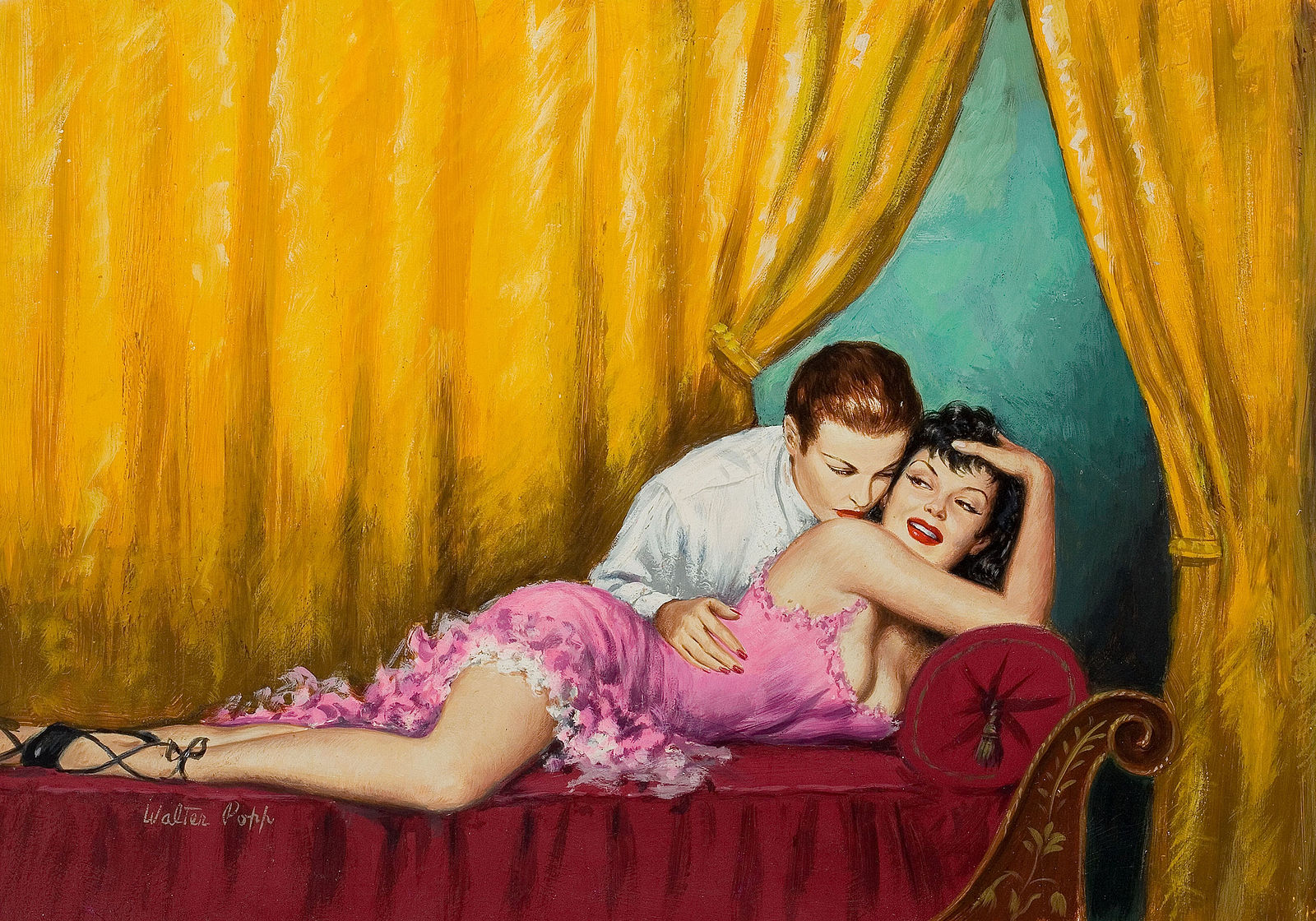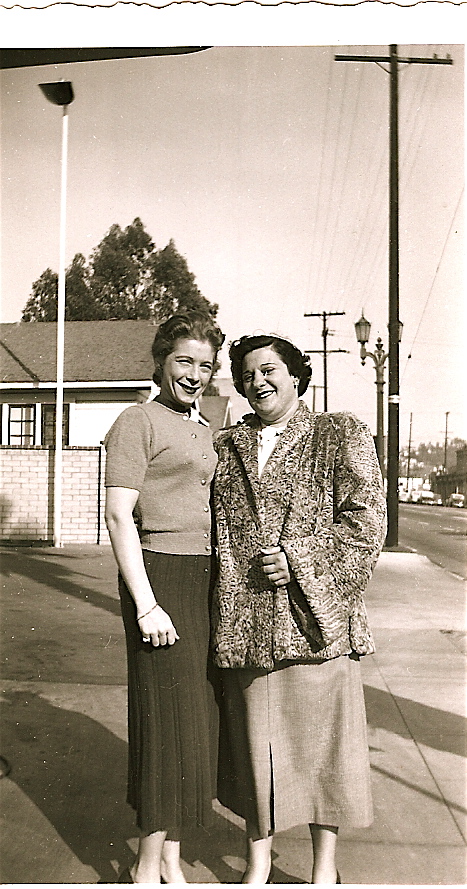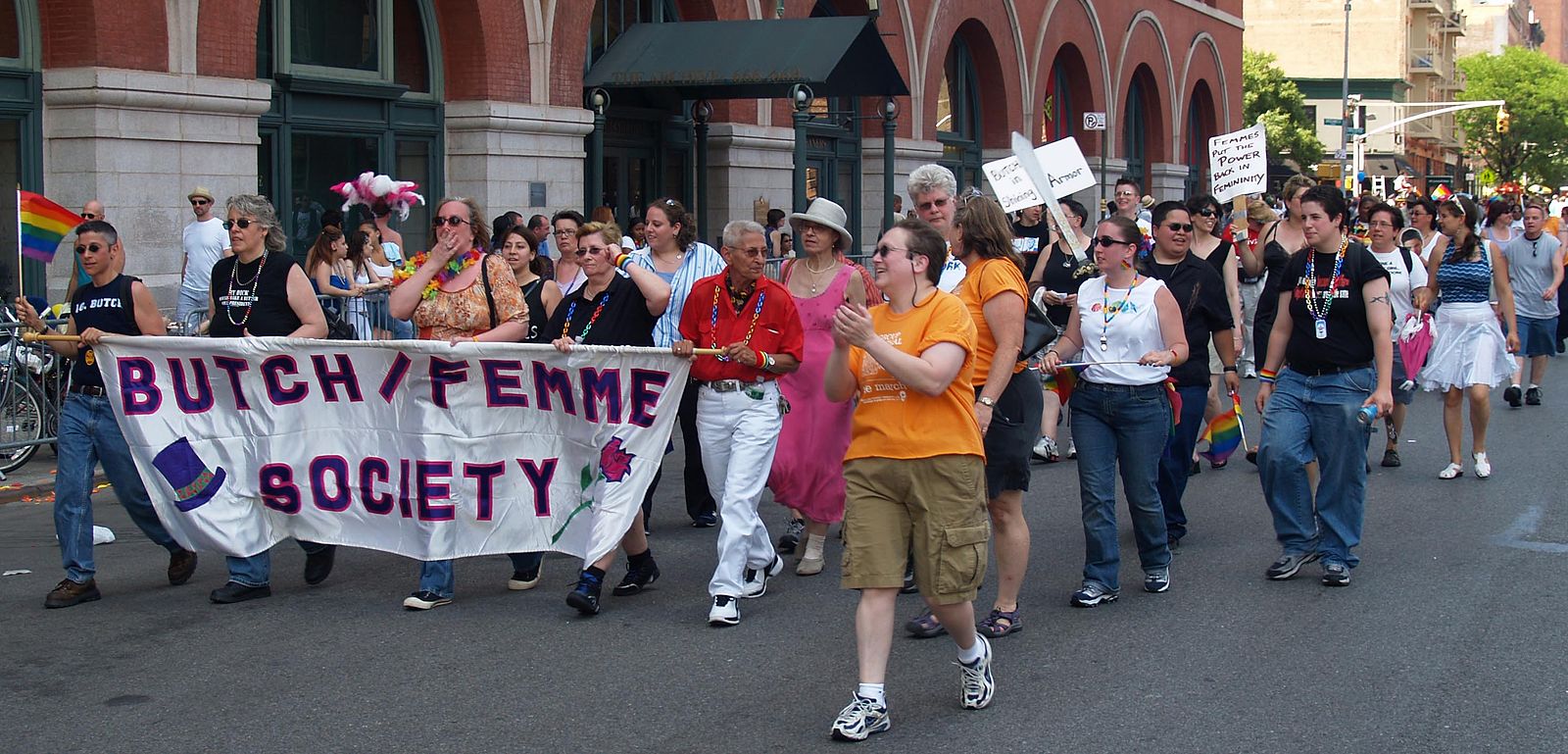Moderated by Lauren Gutterman
In her classic 1984 article, “The Mythic Mannish Lesbian: Radclyffe Hall and the New Woman,” Esther Newton argues that female masculinity was integral in making lesbian sexuality visible at the turn of the twentieth century, that the gender-transgressing mannish woman was, in fact, “the public symbol of the new social/sexual category ‘lesbian.’” As evidence, Newton points to the masculine lesbian protagonist, Stephen Gordon, of Hall’s The Well of Loneliness (1928), but she concludes with a brief discussion of Stephen’s more feminine love-interest Mary Llewellyn, who ultimately leaves Stephen for a man. As Newton wrote, “The ‘womanly’ lesbian contradicted the convictions that sexual desire must be male and that a feminine woman’s object of desire must be a man. Mary’s real story has yet to be told.”
To what extent has female masculinity shaped lesbian and/or queer women’s histories in the decades since Newton’s writing? What do we know about “Mary’s story” now?

Cookie Woolner: While the conflation of female masculinity and lesbianism that Esther Newton noted in the 1920s has held sway since then, the “mannish woman” has not been the only symbol of queer women’s identity. The historical problem of “femme invisibility” (to use a contemporary phrase) has meant that masculine queer women are visible through their image alone, while femmes’ alleged gender normativity means their queerness only becomes visible through their interaction with other visibly queer women, not on their own. Along with The Well of Loneliness, another major cultural production of the 1920s to focus on queer women was the popular Broadway play The Captive. This French import, which told the story of an affair between two married women, revealed that feminine queer women could hide their desires for women “under [the] cover of friendship.” A clueless husband might have no idea that his wife’s “friend” was actually her lover, as their feminine gender presentations did little to suggest sexual deviance. This ability of feminine women to carry out queer relationships stealthily in some ways made them a larger threat to heteronormative society than the visibly queer masculine woman. The assumption of femme invisibility has been used strategically to keep queer relationships hidden, and this possibility also threatened to send heterosexual nuclear families into disorder.
I think “Mary’s story” is a very expansive one that is well-documented but mostly not under the rubric of “femme history.” While butch/fem(me) identities emerged in a specific time and class milieu (generally viewed as the mid-century working class), femme has become a much more expansive identity in the twenty-first century. For example, trans femme activist Julia Serano explores issues of trans inclusivity in contemporary femme space in her book Excluded: Making Feminist and Queer Movements More Inclusive. Writing about the emergence of modern lesbian identity in the 1890s, Lisa Duggan notes in her book Sapphic Slashers that the figure of the “normal woman” in the lesbian love triangles of this era “might be understood within a genealogy of the contemporary ‘femme.’” Following Duggan’s claim that “a history of femmes” would be “a history of normative femininities and their subversive mobility,” Mary’s story is also part of the history of sex workers, trans women’s histories, the history of married women, women in turn-of-the-century prisons playing “mama” and “papa” roles, and women in the entertainment industry, among others sites where historical queer femmes are often found.
Alix Genter: Esther Newton’s “mythic mannish lesbian” was alive and well in the United States in the decades after World War II, only she had acquired a new name: butch. With a short, “severe” haircut, men’s slacks, and a tough attitude, she remained the public face of lesbianism throughout much of the twentieth century. In the 1940s, 1950s, and 1960s, butches subscribed to a style of lesbianism rooted in a sense of gendered complementarity in which they were understood as the masculine counterpart to their more traditionally feminine partners: femmes. With gendered approaches to appearance, behaviors, and roles in courtship, relationships, and sex, these lesbians innovatively navigated dominant postwar ideologies while creating a distinctly queer cultural form: butch-femme.
Midcentury butch-femme communities have been the subject of several historical studies, but it seems that the allure of gender subversion is simply too captivating for the femme half of the dyad to garner much attention. Elizabeth Lapovsky Kennedy, Madeline Davis, Donna Penn, and even femme icons have emphasized the visibility of butch gender rebellion, arguing that by defiantly proclaiming their queerness through their looks, butches expressed women’s sexual autonomy, claimed lesbian social spaces, and acted as vehicles for introducing others to gay life. While these arguments are valid and important, they often leave femmes’ roles in lesbian communities and resistance unexamined. They also obscure less “obvious” manifestations of butchness.

Part of the reason that analyzing femmes—and feminine lesbians more broadly—seems so difficult is that gendered transgressions remain conceptually linked to understandings of queerness. The Marys of the world, women who embody their queerness with gender normativity rather than nonconformity, were and are regarded with misrecognition, confusion, even distrust. In the postwar period, even though they comprised half of most couples and many butches expressed a desire for glamorous feminine partners, it was widely believed that a true lesbian displayed at least some aspects of masculinity. Femmes were therefore deemed suspicious, prone to reverting back to heterosexual life at any time. In bars, they were often mistaken for adventurous straight girls looking to see how the other half lived. And when they looked in the mirror and did not see the masculinity that was supposed to accompany their desire for other women gazing back at them, some femmes simultaneously doubted their queerness, yet felt queerer than ever for failing to fit into a recognizable paradigm.
Yes, the cultural archetype of the “mannish lesbian” left queer femininity in a precarious state. Confronting the “problem” of their gender normativity, femmes employed creative solutions to understand themselves as queer beings and assert membership in lesbian communities, manipulating dominant constructions of postwar femininity to produce their own queer gender identities.
Amanda Littauer: Since the 1990s, various scholars have documented the existence and gendered subjectivities of women who expressed same-sex desire without any evident corresponding expression of female masculinity, although focused analysis of lesbian femininity is still quite minimal. For example, Rachel Cleves has written about Sylvia Drake, the feminine partner to “female husband” Charity Bryant; the couple made a home and a life together in Vermont in the early nineteenth century. Leila Rupp explains that as long as “respectable” women avoided appearing “mannish” or “utterly rejecting men,” they could partake in romantic friendships that often included intimate and sexual practices. For the postwar era, Lauren Gutterman has shown how suburban housewives had affairs with one another, often unaware of early lesbian rights organizing by middle-class feminine lesbians such as Phyllis Lyon. Meanwhile, working-class “fems” upheld the culture of lesbian bars and house parties. Elizabeth Kennedy and Madeline Davis note, however, that finding femme lesbians to interview was difficult, because femmes were more likely than butches to enter into relationships with men and to move in and out of lesbian communities over time. Even for the postwar era, when gender differentiation among lesbians was most pronounced and stylized, queer femininity often faded from view.
In fact, it is precisely the comparative invisibility of feminine female homosexuality that vexed Cold War authorities. Femininity allowed queer women access to mainstream social and cultural spaces in ways that heightened their potential influence. As I have written elsewhere, commentators in the 1950s were obsessed with insidious threats to the “American way of life,” a construction embodied by the white, heterosexual, reproductive, suburban family. Popularizers of psychoanalysis and sociology alike worried that everything from an unhealthy mother-child relationship to overly punitive sex education could derail a young woman’s growth into a well-adjusted wife and mother, leaving even suburban housewives vulnerable to “latent” lesbian desires and seduction by “overt” lesbians. Rarely have feminine, same-sex desiring women held so much perceived (if painfully little actual) power.
Arguably, the notion of latent lesbianism relied upon an unnamed fear of bisexuality, which is a strikingly under-developed concept in both LGBT history and queer theory. While of course many feminine lesbians have expressed exclusive sexual and romantic interest in women, and while it would be a simplistic mistake to fuse lesbian desire to female masculinity, historical and contemporary evidence suggests that bisexuality often shares experiential territory with queer femininity. Ellen Lewin’s interviews with lesbian mothers in the late 1970s, for instance, contain rich evidence from women who did not describe themselves as tomboyish or masculine and whose sexual and romantic histories included male and female partners. Some subjects narrated moving from heterosexuality to lesbianism; others enjoyed sex with men but preferred women as (sexual and) romantic partners; and a few used the term bisexual to convey their ongoing openness to relationships with people of different genders. If we want a more sophisticated and inclusive understanding of gender and sexuality—and especially their mutual constitution—historians will need to more fully investigate the significance of queer femininity, lesbian and bisexual alike.

Anastasia Jones: If history has taught us anything, it’s that Esther Newton is right about most things. She was entirely prophetic about the importance of masculinity—or “mythic mannishness,” if you prefer—in lesbian history. It’s essentially impossible to recount lesbianism’s relationship with academia without devoting considerable time and attention to masculine-leaning women. From the pioneering work of Elizabeth Lapovsky Kennedy and Madeline Davis to Laura Doan’s path-breaking oeuvre, scholars have thoroughly explicated and analyzed the sexual power and social utility of female masculinity.
But even Esther Newton is wrong—or, let’s be fair, only partially correct—sometimes. Especially over the last decade and a half, historians have demonstrated how femininity has been historically understood, construed, and portrayed by medical professionals, cultural authorities, and queer women alike as sexually potent, with or without the oppositional erotic frisson of masculinity. Scholars like those mentioned above, as well as as well as Regina Kunzel, Sharon Marcus, Martha Vicinus, and Susan Lanser (among numerous others) have illustrated how sexual intimacy and desire between women did not necessarily require gender inversion for social legibility. In doing so, these scholars have fruitfully picked apart the stitches binding masculinity to lesbianism. Mary, we have learned, could have located and occupied a feminine queerness of her very own all along.
What troubles me is the staying power of Newton’s provocation. In training a spotlight on Stephen Gordon, Newton illuminated real historical patterns. But her article was also very much a push-back against its particular historical moment, namely the denunciation of butch-femme erotics in second-wave lesbian-feminist circles. The last decade of scholarship in the history of sexuality has revealed innumerable entwinements: we have learned of the ways in which sexuality is bound up in violence, state power, and affect; and we have explored how and why sexuality is complicated by questions of race, class, and ethnicity. But we are still relatively unsure of how these entwinements shaped or were shaped by women’s same-sex intimacies. The mythic mannish lesbian remains a concern in lesbian history, in other words, because we need more work, more history, more stories. We don’t yet have a full understanding of Mary’s complex identities and desires, let alone the ways these categories and yearnings interweave with other social forces, other people.
If we don’t have enough lesbian history, it’s because we don’t yet know enough about women in history—particularly the ways in which women have interacted with each other. In Stephen Gordon’s masculinity, Newton located a stable, conspicuous sexual identity. The many “Marys” of history spin more convoluted tales: narratives and categories defined by indefiniteness, flexibility, and, at times, concealment. But the intricacy of these identities make them worth tracing. In their liminality and elasticity, they can teach us about the possibilities and limits of queerness, femininity, and women’s history.

Shannon Weber: “Mary’s story” has been told by queer femme women for decades. Unfortunately, the academy has still been very slow to focus on queer women’s femininities, and the literature that does exist tends to be rooted in the realm of edited anthologies on LBQ femmes’ personal experiences. With respect to historians of sexuality, there has not been much illumination of “Mary’s story” since Lillian Faderman’s Odd Girls and Twilight Lovers and Elizabeth Kennedy and Madeline Davis’ Boots of Leather, Slippers of Gold. Global sexualities historian Leila Rupp’s 2009 book Sapphistries is one notable exception. Rupp argues that two enduring patterns have shaped women’s same-sex attraction around the world: one of sameness and one of gender difference, with a focus on butch/femme. While the aim of Rupp’s work is not to flesh out a theory or detailed study of queer femininities, she at least includes a sense of them throughout her study. At the same time, in most scholarship referencing queer femininity, there is no discussion of queer femininities on their own terms, separate from the butch/femme construction, which itself illustrates the extent to which female masculinity has shaped LBQ women’s histories. And after all, to date there has been no comparable theory-heavy Queer Femininity study to complement J. Halberstam’s Female Masculinity.
Some may argue that the dearth of research on queer femmes is related to the turn away from “lesbian studies” and towards queer theory as part of the postmodern turn towards the end of the twentieth century. I view this as a false dichotomy and propose instead that, similarly to feminist scholar Julia Serano’s arguments in Whipping Girl, the inattention to positive understandings of femininity is inextricably linked to how femininity is devalued in most cultures. This is true even in Western feminist scholarship, which has tended to engage with femininity as a stand-in for patriarchally-enforced passivity. Understanding the ways that Western feminist theorists have advanced critiques of hegemonic, heterosexual femininity illuminates how ill-equipped feminist theory has been to consider the transgressive implications of queer femme-ininities.
For example, radical feminist scholar and activist Susan Brownmiller, in her 1984 book Femininity, described femininity as “a nostalgic tradition of imposed limitations.” Such a critique, while crucial in deconstructing compulsory regimes of heterosexual femininity, cannot be used to understand the totality of subversive queer femme-ininities in the second decade of the twenty-first century, especially when queer cisgender femmes and transgender women of all sexualities often have to fight for the right to be feminine and treated with respect. While the study of masculinities has exploded in gender studies, a similar attention to femininities, and queer femininities in particular, is only more recently beginning to emerge.
Meanwhile, Mary’s trope of femme-as-eventual-betrayer continues to be told, whether in Helena Whitbread’s providing access to real-life 1820s masculine British diarist Anne Lister’s lamentations that her feminine partner Mariana rejected her to marry a man, or in contemporary popular culture, as seen in the 2010 film The Kids Are All Right, when feminine queer character Jules cheats on her more masculine wife with their long-lost male sperm donor. A new narrative is desperately needed.
Alix Genter is an independent scholar with a Ph.D. in U.S. women’s and gender history from Rutgers University. She is currently completing her first manuscript, Risking Everything for That Touch: Lesbian Culture from World War II to Women’s Liberation, which expands understandings of butch-femme culture and identities in the midcentury U.S. Her article on butch-femme fashion and queer legibility is in the current issue of Feminist Studies. She has taught History and Women’s and Gender Studies at Rutgers and The College of New Jersey.
is an independent scholar with a Ph.D. in U.S. women’s and gender history from Rutgers University. She is currently completing her first manuscript, Risking Everything for That Touch: Lesbian Culture from World War II to Women’s Liberation, which expands understandings of butch-femme culture and identities in the midcentury U.S. Her article on butch-femme fashion and queer legibility is in the current issue of Feminist Studies. She has taught History and Women’s and Gender Studies at Rutgers and The College of New Jersey.
Anastasia Jones earned her Ph.D. in History from Yale University. She is currently teaching in the Department of U.S. Studies at the University of Toronto. Anastasia is also working on a book project, The Standard Deviants: Female Intimacy and Homosexuality in Modern U.S. Popular Culture, which traces popular conceptions of intimacy between women in U.S. interwar culture. Anastasia is a recipient of the John Money Fellowship for Scholars of Sexology at the Kinsey Institute. And she will have an article, “She Wolves: Feminine Sapphists and Liminal Sociosexual Categories in the US Urban Entertainment Industry, 1920–1940” published in the May (2017) issue of the Journal of the History of Sexuality.
earned her Ph.D. in History from Yale University. She is currently teaching in the Department of U.S. Studies at the University of Toronto. Anastasia is also working on a book project, The Standard Deviants: Female Intimacy and Homosexuality in Modern U.S. Popular Culture, which traces popular conceptions of intimacy between women in U.S. interwar culture. Anastasia is a recipient of the John Money Fellowship for Scholars of Sexology at the Kinsey Institute. And she will have an article, “She Wolves: Feminine Sapphists and Liminal Sociosexual Categories in the US Urban Entertainment Industry, 1920–1940” published in the May (2017) issue of the Journal of the History of Sexuality.
Amanda Littauer earned her Ph.D. from Berkeley and is an Associate Professor of History and the Center for the Study of Women, Gender, and Sexuality at Northern Illinois University. Her research focuses on 20th-century sexual culture, the history of women and girls in the modern U.S., and LGBT history. Her first book, Bad Girls: Young Women, Sex, and Rebellion before the Sixties, was published by University of North Carolina Press in 2015. She has published in sources such as The Journal of the History of Sexuality, The Journal of Women’s History, Queer Fifties: Rethinking Gender and Sexuality in the Postwar Years (ed. Heike Bauer and Matt Cook), and the forthcoming Routledge History of Queer America (ed. Don Romesburg). She is also co-chair of the Committee on LGBT History.
earned her Ph.D. from Berkeley and is an Associate Professor of History and the Center for the Study of Women, Gender, and Sexuality at Northern Illinois University. Her research focuses on 20th-century sexual culture, the history of women and girls in the modern U.S., and LGBT history. Her first book, Bad Girls: Young Women, Sex, and Rebellion before the Sixties, was published by University of North Carolina Press in 2015. She has published in sources such as The Journal of the History of Sexuality, The Journal of Women’s History, Queer Fifties: Rethinking Gender and Sexuality in the Postwar Years (ed. Heike Bauer and Matt Cook), and the forthcoming Routledge History of Queer America (ed. Don Romesburg). She is also co-chair of the Committee on LGBT History.
Shannon Weber teaches in the Women’s and Gender Studies department at Wellesley College. She holds a Ph.D in Feminist Studies from the University of California and has published research in venues such as Sexualities, Journal of Homosexuality, and Journal of Lesbian Studies. Dr. Weber is in the process of writing a book manuscript, Queerer Than Thou: LGBTQ Youth Cultures at U.S. Women’s Colleges and the Politics of Exclusion, based on her dissertation research. Her commitment to furthering femme visibility through style has recently been featured in a piece as part of the Hi Femme! project at DapperQ. She lives in Boston, Massachusetts and enjoys exploring New England with her partner and dog.
teaches in the Women’s and Gender Studies department at Wellesley College. She holds a Ph.D in Feminist Studies from the University of California and has published research in venues such as Sexualities, Journal of Homosexuality, and Journal of Lesbian Studies. Dr. Weber is in the process of writing a book manuscript, Queerer Than Thou: LGBTQ Youth Cultures at U.S. Women’s Colleges and the Politics of Exclusion, based on her dissertation research. Her commitment to furthering femme visibility through style has recently been featured in a piece as part of the Hi Femme! project at DapperQ. She lives in Boston, Massachusetts and enjoys exploring New England with her partner and dog.
Cookie Woolner is a cultural historian of race, gender, and sexuality in the modern U.S. She is an Assistant Professor in the History department at the University of Memphis and received her PhD in 2014 from the University of Michigan in History and Women’s Studies. Her current manuscript, “The Famous Lady Lovers:” African American Women and Same-Sex Desire Before Stonewall, is the first in-depth examination of black women who loved women in the nineteenth and early-twentieth centuries in the U.S. Her article, “‘Woman Slain in Queer Love Brawl:’ African American Women, Same-Sex Desire, and Violence in the 1920s Urban North,” was recently published in a special issue of The Journal of African American History. She is on the governing board of the Committee on LGBT History.
is a cultural historian of race, gender, and sexuality in the modern U.S. She is an Assistant Professor in the History department at the University of Memphis and received her PhD in 2014 from the University of Michigan in History and Women’s Studies. Her current manuscript, “The Famous Lady Lovers:” African American Women and Same-Sex Desire Before Stonewall, is the first in-depth examination of black women who loved women in the nineteenth and early-twentieth centuries in the U.S. Her article, “‘Woman Slain in Queer Love Brawl:’ African American Women, Same-Sex Desire, and Violence in the 1920s Urban North,” was recently published in a special issue of The Journal of African American History. She is on the governing board of the Committee on LGBT History.

NOTCHES: (re)marks on the history of sexuality is licensed under a Creative Commons Attribution-NonCommercial-NoDerivatives 4.0 International License.
Based on a work at www.notchesblog.com.
For permission to publish any NOTCHES post in whole or in part please contact the editors at NotchesBlog@gmail.com




